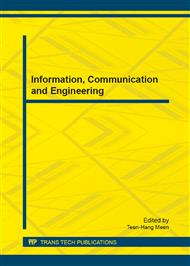p.32
p.37
p.43
p.49
p.55
p.61
p.67
p.73
p.81
Evaluating Interactive Installation for Media-Assisted Language Learning: Using Anikee as an Example
Abstract:
This study delineates the design of an exploratory study which investigates the potential of using an interactive installation, Anikee, as unorthodox pedagogical tool to support children learning of the target language. The purpose of this study is to implement instructional gaming and adopt an inductive approach to investigate user perceptions engendered from interact Anikee as a language learning tool. The researchers’ working hypothesis is that interactive installation could serve as a virtual context rich in social interactions which could be conducive to the emergent development of communicative competence. Qualitative data will be collected from interviews and a post-interaction questionnaire and will be transcribed and analyzed. Analysis of interview and textual data focuses on how user-generated perceptions could be accounted for based on Hahha and Wozniak (2001) motivation theory. Coding schemes reflecting participants’ motivational trends in playing the interactive installation to learn English will be generated by multiple researchers to ensure inter-rater reliability. These user-generated perceptions could illuminate the strengths and weaknesses of utilizing digital media for media-assisted language learning and also inform motivations in playing to learn, digital play-based learning research, and future digital media design.
Info:
Periodical:
Pages:
55-60
Citation:
Online since:
February 2013
Authors:
Price:
Сopyright:
© 2013 Trans Tech Publications Ltd. All Rights Reserved
Share:
Citation:


